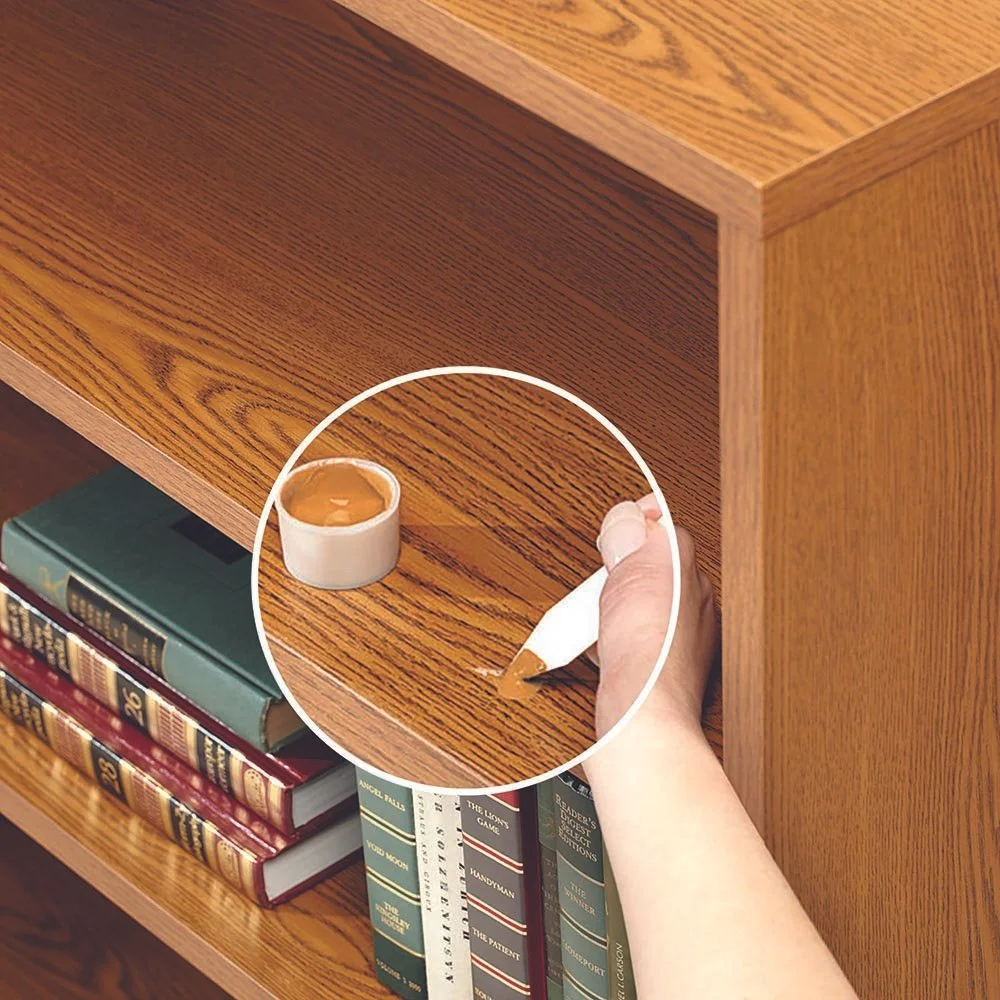DIY Furniture Touch-Up: Repairing Scratches and Dents Like a Pro
DIY Furniture Touch-Up Guide
Office furniture is an important investment for many reasons like comfort, health, and aesthetic appeal. From ergonomic solutions to eco-friendly materials, quality office furniture can improve the health and productivity of employees, and influence clients’ perceptions of the company.
Home furniture is also designed for comfort and aesthetic appeal but usually not for ergonomic functionality. In some cases, home furniture is rarely used (like the white sofa in the front room I was never allowed to sit on as a child). In addition, some people inherit old furniture from previous generations for nostalgia and memories.
Whether for office or home, furniture may become damaged from frequent moving, improper storage, or just general wear and tear over time. Scratches, dings, gouges, dents, and tears can make your once beautiful furniture look unsightly. Instead of replacing the chair or desk in need of repair, why not try DIY?
The Art of DIY Furniture Repair
Sometimes you need to seek professional help, like when furniture has significant structural damage. Other repairs, however, like minor scratches and nicks, small upholstery tears, and loose screws can be simple DIY fixes. Why do it yourself? There are several benefits, including cost savings, extending the lifespan of your furniture, and the personal satisfaction of doing something on your own.
● Cost Savings: Repairing furniture yourself costs significantly less money than hiring a professional or replacing the furniture.
● Extend Lifespan: Keeping office furniture repaired and looking good can extend its lifespan, which means you can use it longer.
● Personal Satisfaction: Completing a DIY project can provide a sense of accomplishment and fulfillment, especially if you have a “check it off your list” mentality.
Essential Tools and Materials for DIY Repair
When doing DIY repairs on office or home furniture it’s important to have the right tools and materials needed for the specific type of repair. For example, are there light scratches or deep gouges on your desk’s legs? A scratch repair pen may be adequate for light scratches, while wood filler is more appropriate for deeper scratches. Here are some necessary items for common DIY furniture repairs.
● Scratch Repair Pens: These pens, or markers, fill in the scratched area with colored dye that matches the wood’s finish. The shape of the pen makes it easy to hold, while the tip of the pen provides a precise application. Similarly available as colored wax sticks.
● Wood Filler: Wood filler, or putty, is a thicker product that can be applied in layers, as needed, to fill in deeper scratches. It also comes in various colors to match the furniture’s wood finish.
● Upholstery Patches: Different types of fabric patches and repair glues are available for common furniture materials like leather and vinyl. Sometimes you can simply stitch a tear with a curved upholstery needle and strong thread.
Step-by-Step Guide to Repairing Scratches and Dents
The most common DIY furniture repairs include fixing scratches, gouges, and dents in wood, tightening loose screws on handles and hinges, and mending small upholstery tears. Hardware repairs can be made quickly and easily by simply keeping a small assortment of popular tools handy, like a multi-bit screwdriver and a claw hammer. Fabric repairs can be patched or sewn. Focusing on wood repairs, here are more detailed instructions to get you on your way to better looking furniture.
Scratches
Furniture repair pens, wax sticks, and touch-up markers help minimize the look of scratches, nicks, scuffs, and stains on wood floors, tables, desks, and chair legs. These products come in a variety of colors designed to match common wood grains, like walnut, oak, cherry, and maple. They are easy to use and are sold individually or in a multi-color kit.
How to use a scratch repair pen:
Match the pen color to the wood grain.
Clean the area.
Draw over the scratch.
Wipe away excess.
Allow material to dry.
Repeat, if needed.
Dents and Gouges
Wood filler is best for more substantial repairs, like dents and gouges in furniture. Because the damaged areas are larger, wood filler acts as a binder that dries and hardens so it can be sanded, stained, or painted. Wood filler also comes in several colors, is easy to use, and can help restore your furniture’s appearance.
How to use wood filler:
Match the wood filler color to the wood grain.
Clean the area.
Apply wood filler, slightly overfilling.
Smooth surface with putty knife.
Allow wood filler to dry.
Sand lightly to blend with surrounding wood.
Apply protective finish, like wax or polyurethane, if needed.
Ready to get your DIY on?
Repairing damaged furniture yourself will not only save you money, but it will also keep your office or home furniture looking good, address minor issues before they become major problems, and give you the satisfaction of a DIY job well done. With so many easy and effective repair tools available, it makes sense to do it yourself.
Check out our furniture touch-up products to explore even more DIY options.







